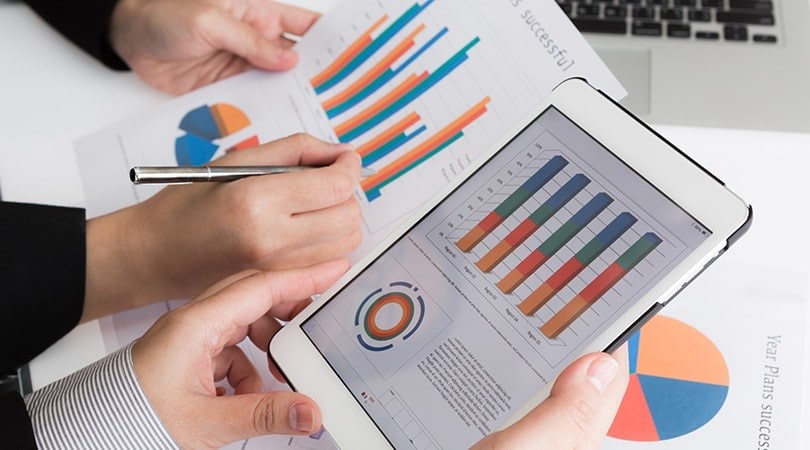What is contract sourcing?
Well, sourcing and contracts go hand-in-hand.
You can’t have one without the other. They are two separate parts of the procurement process and they each have their own distinguishing features.
It’s these differences that we are going to explore in this blog but let’s begin with a few definitions.
What is Strategic Sourcing?
SearchERP defines strategic sourcing as:
“…an approach to supply chain management that formalizes the way information is gathered and used so an organization can use its consolidated purchasing power to find the best possible values in the marketplace and align its purchasing strategy to business goals.”
What does this mean?
Strategic sourcing is a well-thought-out process for identifying and qualifying vendors with the main objective being the amalgamation of buying power and optimization of the entire sourcing process in order to make it more coherent.
What are Contracts?
According to Cornell Law, a contract is simply:
“…an agreement between private parties creating mutual obligations enforceable by law.”
Already we can see the most obvious distinguishing element between strategic sourcing and contracts – their function. So, let us examine these differences in greater depth.
Differences Between Strategic Sourcing and Contracts
a. The Steps Involved in the Strategic Sourcing Process
To recap, strategic sourcing is the process of reviewing every item needed by the organization that you’re going to purchase and finding ways to rationalize this spending. This entire process can be split into the following steps:
Step 1 – Evaluation of the spend category
The procurement team takes time to assess individual categories in order to gain an overview. This allows the team to understand the required quantities, specs such as product sizes, types, colors, and any processes employed in the production. It also gives them an idea of the vendors needed.
Step 2 – Supply market analysis
During this stage, the sourcing team makes concerted efforts to identify and qualify new suppliers pooling from a local or global talent base. Risks and opportunities are equally evaluated. With the qualified list, suppliers’ capabilities are then further assessed to see if they have the capacity to deliver.
Step 3 – Establish the sourcing strategy
A sourcing strategy will then need to be developed. This is a blueprint that will be followed by the procurement team. There is no one-size-fits-all sourcing strategy. Each enterprise is responsible for coming up with its own. Essentially this strategy is supposed to mitigate risk and costs along the supply chain.
Step 4 – Begin the sourcing process
With a prospective list of vendors and a sourcing strategy in place, it’s time to get the ball rolling and initiate a conversation with suppliers. This is typically done through the issuance of an RFP. This solicitation of bids is then followed up by an RFQ if everything checks out.
Step 5 – Brokering and choosing
After you’ve gone through the various proposals and quotations sent through by the vendors it’s time to start the negotiations and select the vendors that best suit your enterprise needs. Responses are weighed against pre-established evaluation criteria in order to ensure a fair judgment.
Step 6 – Awarding contracts
Successful applicants will be informed of the outcomes and this is where the next phase – contract management begins. Sourcing is now officially over and the contract administration process has begun.
The Steps Involved in the Contract Management and Administration Process
The enterprise’s contract manager works alongside the sourcing team to handle the contract administration paperwork.
Typical duties that makeup contract administration include:
– Drafting up the contracts
– Negotiating deliverables
– Setting deadlines
– Developing terms and conditions
– Working on renewal clauses
– Contract approval
The details of the contracts are finalized by the enterprise’s contract administrator and the supplier’s representative.
Once the contracts have been signed, the contracts now fall under contract management.
The contract management process is concerned with everything to do with the contracts – making sure deadlines and delivery times are adhered to, and compliance and regulations followed.
The contract management process is composed of six phases as explained below.
Phase 1 – Planning
All necessary preparations needed to ensure that the contract management process goes on smoothly must be carefully considered.
Phase 2 – Implementing
With every aspect of the contract management process detailed, it’s time to put the plan in motion.
Today, automation is possible thanks to contract management solutions such as those provided by ProcurePort who provide one of the best contract management software in the market.
Phase 3 – Pre-Contract
Collaboration remains central between the contract administrators and managers allowing both parties to dialogue and makes sure they are on the same page and everything is in order.
Phase 4 – Handover
If the administrators and managers aren’t on the same team then there will be a need for a handover.
Phase 5 – Contract
The signed contracts are then filed and both the buyer and vendor now work to fulfill their responsibilities.
Phase 6 – Pre-Renewal
Continual assessment and audits are carried out and metrics evaluated against KPIs. If the buyer is satisfied the contract may be renewed.
Conclusion
Whether you’re sourcing in the supply chain, sourcing tactically, or strategically it’s important that you understand the role of contract sourcing in all of this.
If you’re looking for innovative, intuitive, and robust procurement solutions to complement your sourcing efforts and contract management campaigns look no further than ProcurePort.
To discuss procurement software with a consultant or to schedule a demo of our solutions, contact us today.










